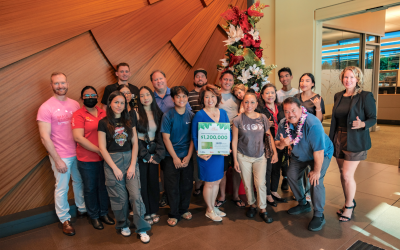 While Health Department visits can be stressful, if you have a properly designed and followed Food Safety Program, your blood pressure should not have to spike. DoH inspectors are visiting to make sure safe food is being served, not to get your restaurant in trouble. Let’s talk a little on what to do when the inspector knocks on your door.
While Health Department visits can be stressful, if you have a properly designed and followed Food Safety Program, your blood pressure should not have to spike. DoH inspectors are visiting to make sure safe food is being served, not to get your restaurant in trouble. Let’s talk a little on what to do when the inspector knocks on your door.
This is just a general overview and very condensed, and you should be aware of all the details that affect your particular operation. What is mentioned here covers most, but not all, areas that are looked at.
First of all – your facility should always be inspection ready. The staff should not need to have a ‘fire drill’ of cleaning and tossing foods when an inspection is announced. You are always following safe food guidelines anyway!!
The inspector will want to look at your permit, pest control records, and required in September, the Food Safety Course Certificate for the PIC. Have all this info up to date and easily found. Keep it in a binder or folder. Certificates can be kept on a wall or in the binder/file. Also starting in September, if your restaurant has an expired permit, it may be an automatic RED closure. Make sure your permit is renewed early and keep a copy of your renewal application with the other info. This may be proof that you have submitted the renewal application.
The inspector will tour the kitchen and facility, checking holding, cooling temps, and records of cooling. Do you have any foods that are kept in the TDZ? They should have a 4 hour discard timestamp, as well as having a written policy. Handwashing sinks should be fully stocked and not blocked or used for anything else, warewashing machinery, sani-buckets and 3 compartment sinks are checked for proper sanitizer strengths and temps. Trash handling and general cleaning will be looked at as well. Make sure your staff cleans under all counters nightly! How is your plumbing? Any backups or leaks? Get them fixed ASAP
Proper food storage and handling is looked at. Raw poultry foods need to be placed at the bottom, with beef, then seafood and other foods above them. In line drawers, raw chicken needs to have its own drawer, or is placed in the bottom drawer in front. This avoids raw chicken juice from dripping into other foods.
As the inspector walks around, they will observe how your staff works. Both front and back staff will be observed to see if they are not touching RTE foods with bare hands. Cooks should be using tongs or gloves, while servers and bartenders should not barehand touch any breads, garnishes for food or drink. Make sure there are proper tools (gloves, tongs, picks) available at the station at all times, and the staff uses them at all times. Proper handwashing and changing of gloves, along with keeping wet sani-cloths in the buckets after use, not on the counter.
The PIC should walkaround with the inspector to answer questions. DoH inspectors are happy to answer questions on how to improve your facility, as it shows you are being proactive in providing safe food.
Reports are available on the DoH webpage https://hi.healthinspections.us/hawaii/ and can give valuable information to diners and your facility. You and your team can be proud to have your GREEN placard on your door!!
To learn more detail about Food Safety procedures, or to set up an independent discounted audit of your facility, please contact Peter Bellisario of PeterBFoodSafetyAudits.com at peter@peterbfoodsafety.com or (808)491-7766. Check out my website – www.PeterBFoodsafety.com




0 Comments